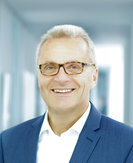M2DC Modular Microserver DataCentre
Motivation
During the last decade fast development of compute-demanding applications such as Internet of Things, data analytics, media processing, and cloud platforms caused a fast growth of data centres. This fast growth comes with needs for large investments and increased power usage requirements. To cope with these issues without slowing down the innovation based on the adoption of pervasive computing technologies, dramatic decreases in costs and power requirements are required. A lot of opportunities are coming from the technology side and embedded computing architectures. New architectures with high computing power compared to their power consumption become widely available, such as mobile processors (e.g. ARM-based multi/manycore), embedded SoCs (System-on-Chip) including GPU or FPGA-based accelerators. Going beyond the separation between embedded and desktop/server markets, these architectures draw a continuum of computing resources, ranging from power-optimized micro-controllers to powerful manycore server chips, enabling designers to tailor a system to the exact needs of applications and workload with appropriate components. These challenges and opportunities are at the heart of the Modular Microserver DataCentre (M2DC) project.
Funded by
Goal
M2DC will investigate, develop, and demonstrate a modular, highly-efficient, cost-optimized server architecture composed of heterogeneous microserver computing resources, being able to be tailored to meet requirements from various application domains such as image processing, cloud computing or even HPC. To achieve this objective, M2DC is based on the results of different EU FP7 projects such as FiPS (for the management of heterogeneity in a server infrastructure) or Mont-Blanc (ARM-based HPC) and will be built on three main pillars:
- A flexible server architecture that can be easily customised, maintained, and updated so as to enable adaptation of the data centre.
- Advanced management strategies and system efficiency enhancements in order to improve the runtime behavior of the system regarding performance and energy efficiency.
- Well-defined interfaces to surrounding software ecosystems to enable easy integration into existing data centre management solutions.
The results of these three pillars will be combined to produce TCO (Total Cost of Ownership)-optimized appliances, deployed in a real data centre environment and seamlessly interacting with existing infrastructure to run real-life applications.
Technologies
The target architecture will be optimized with respect to the integration of computing resources with constrained thermal power dissipation such as embedded CPUs and GPUs, FPGAs, manycore processors, while also being able to integrate more powerful resources if needed. Built on established standards such as COM Express, the server architecture will enable the integration of third-party boards and chips, leading to what can be called an open server architecture. The server architecture will include built-in enhancements (e.g., for computing acceleration, enhancements of the global efficiency thanks to data management, dependability and security, behaviour monitoring, etc.) on system level. High power efficiency will be provided by an intelligent power management enabling to constantly optimize the power consumption of the system thanks to proactive and reactive strategies. To enable seamless integration into data centre software and management environments the latest middleware software for resource management, provisioning, etc will be used. For Building on the Linux operating system (e.g., Linaro for ARM-based compute modules) and other well-known software infrastructures, M2DC will also feature optimized runtime software implementations when needed for improving the efficiency of the system towards application domains such as cloud computing, big data analytics, and HPC applications.
External Leader
Ariel Oleksiak (PSNC)Scientific Director
Daniel Schlitt, Wolfgang Nebel; Proceedings of ICT for Sustainability 2016; 08 / 2016
Sven Rosinger, Daniel Schlitt, Christian Pieper, Ariel Oleksiak, Michal Kierzynka,Giovanni Agosta, Carlo Brandolese, William Fornaciari, Gerardo Pelosi, Micha vor dem Berge, Wolfgang Christmann, Stefan Krupop, Mariano Cecowski, Robert Plestenjak, Justin Cˇ inkelj, Mario Porrmann, Jens Hagemeyer, Ren´e Griessl,Meysam Peykanu, Lennart Tigges, Lo¨ıc Cudennec, Thierry Goubier, Jean-Marc Philippe, Udo Janssen, Chris Adeniyi-Jones; Proceedings of the 19th Euromicro Conference on Digital System Design; 08 / 2016
Ariel Oleksiak, Michal Kierzynka, Micha vor dem Berge, Wolfgang Christmann, Stefan Krupop, Mario Porrmann, Jens Hagemeyer, René Griessl,Meysam Peykanu, Lennart Tigges, Sven Rosinger, Daniel Schlitt, Christian Pieper, Udo Janssen, Giovanni Agosta, Carlo Brandolese, William Fornaciari, Gerardo Pelosi, Mariano Cecowski, Robert Plestenjak, Justin Činkelj, Cudennec, Loïc Thierry Goubier, Philippe, Jean-Marc Chris Adeniyi-Jones, Luca Ceva; Embedded Computer Systems: Architectures, Modeling, and Simulation (SAMOS); 07 / 2016
Ariel Oleksiak, Michal Kierzynka, Wojciech Piatek, Micha Vor Dem Berge, Wolfgang Christmann, Stefan Krupop, Mario Porrmann, Jens Hagemeyer, René Griessl, Meysam Peykanu, Lennart Tigges, Sven Rosinger, Daniel Schlitt, Christian Pieper, Udo Janssen, Giovanni Agosta, Carlo Brandolese, William Fornaciari, Gerardo Pelosi, Mariano Cecowski, Robert Plestenjak, Justin Cinkelj, Loïc Cudennec, Thierry Goubier, Jean-Marc Philippe, Chris Adeniyi-Jones, Luca Ceva and Holm Rauchfuss; Microprocessors and Microsystems Volume 52; July / 2017
Daniel Schlitt and Christian Pieper and Wolfgang Nebel; Proceedings of the 7th International Conference on Smart Cities and Green ICT Systems - Volume 1: SMARTGREENS,; 2018
Ariel Oleksiak, Micha vor dem Berge, Mario Porrmann, Sven Rosinger, Daniel Schlitt, Christian Pieper, Udo Janssen, Holm Rauchfuss, Giovanni Agosta, Joao Pita Costa, Thierry Goubier, Chris Adeniyi-Jones et. al.; Hardware Accelerators in Data Centers; August / 2018
Giovanni Agosta and Alessandro Barenghi and Tomasz Ciesielczyk and Rahul Dutta and William Fornaciari and Thierry Goubier and Jens Hagemeyer and Lars Kosmann and Nicholas Mainardi and Ariel Oleksiak and Gerardo Pelosi and Wojciech Piatek and Christian Pieper and Mario Porrmann and Daniel Schlitt and Michele Zanella; OPPORTUNITIES AND CHALLENGES for European Projects - Volume 1: EPS Portugal 2017/2018; 2017
www.man.poznan.pl
www.arm.com
www.christmann.info
www.cea.fr
www.huawei.com
www.uni-bielefeld.de
www.xlab.si
automotive.vodafone.it
www.elet.polimi.it/index.jsp
www.cewe.de
www.beyond.pl
www.reflexces.com
www.eolen.com
Contact
Duration
End: 30.06.2019
Source of funding

GA: 688201


